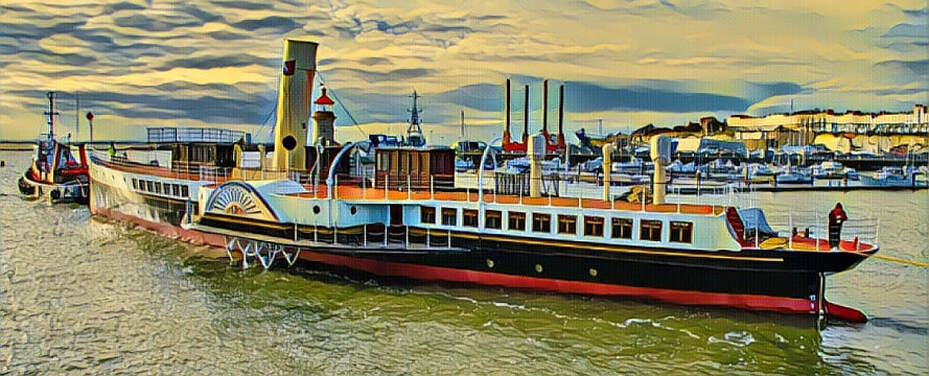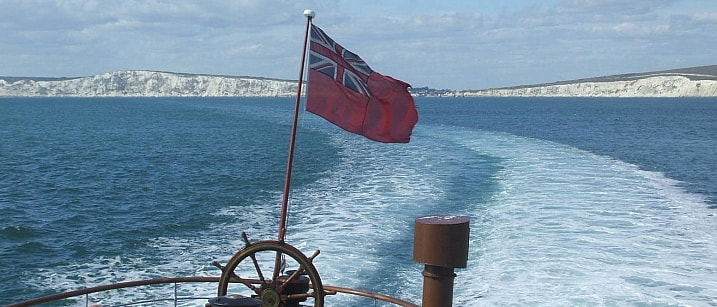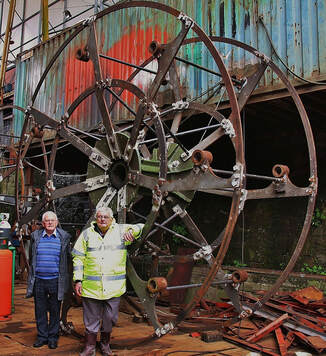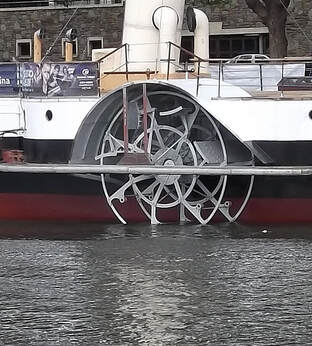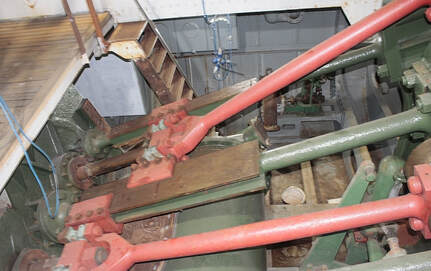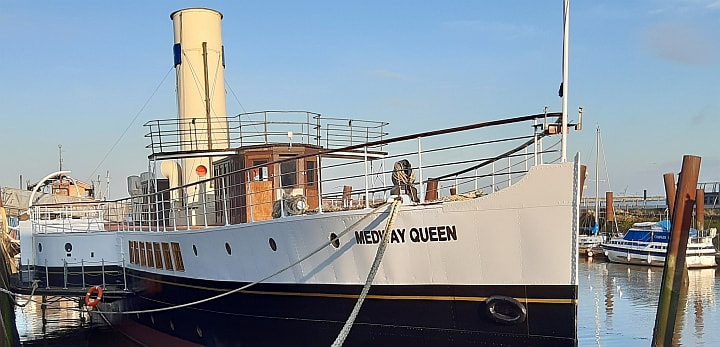An Astounding Invention - the Paddle Steamer
An Exhibition page for the 2022 Heritage Open Days Festival.
The origins of steam power go back further than you might think..... There were early experiments in ancient Greece betwen 30 and 15 BC and in 1st century Roman Egypt. Further experiments took place in Egypt in the 16th century and by Thomas Savery in 17th century England. Thomas Newcomen's atmospheric engine (1712) became the first commercially successful engine and used the atmospheric pressure for its working stroke. Steam raised the piston in the cylinder and atmospheric pressure returned it as the steam condensed. Such engines were mostly used to pump water and it was not until the19th century that steam pressure provided the working stroke.
|
In 1704, Denis Papin (France), was the first to construct a steam-powered boat and he cast the first steam cylinder of the world in the iron foundry at Veckerhagen. In 1794 the Earl of Stanhope built a steam vessel, the Kent. This was experimental but demonstrated that a steamship could work. In 1801, the Charlotte Dundas ran trials near Glasgow and in 1807 Robert Fulton designed and operated the steam powered Clermont which ran on the Hudson River, USA. The first steamship purpose-built for regularly scheduled trans-Atlantic crossings was Brunel's SS Great Western of 1838, heralding the era of sea going paddle steamers.
|
Above: The distinctive twin wake of a paddle steamer.
Below: the massive size of Medway Queen's paddle wheels. |
|
The early steam engines were mainly vertical (the orientation of the cylinders) but as steam pressure and power increased steam cyclinder size decreased and engines became available in a horizontal or diagonal configuration. Multiple cylinders were connected to a single crank shaft with a larger low pressure cylinder using exhaust stem from the high pressure cylinder. Such engines were designated "compound" to denote varying pressure and cylinder bore dimensions. To get the engine weight as low in the hull as possible but keep the paddle shafts well above the waterline most paddle excursion steamers were fitted with "diagonal" engines (neither vertical nor horizontal), like Medway Queen's engine compound diagonal engine shown here.
|
Paddle-wheels in steam ships, however, had several problems. Their main disadvantage was that when rolling in rough seas they could become submerged or rise out of the water altogether, harming the engines. During the 1840s, screw propellers replaced paddle-wheels, and engines became larger. Iron and steel soon replaced wooden ships, which were prone to leaks when fitted with large engines.
One of the inventors of the screw propeller was Sir Francis Pettit Smith who patented his idea in 1836. Sir Francis built a six-ton launch, the Francis Smith, fitted with a 30-inch, two-bladed wooden screw and a single-cylinder engine to demonstrate its advantages to the Admiralty. During the trials the propeller hit an obstruction which "shortened" the blades, the vessel’s speed actually increased. With a replacement propeller, the Francis Smith steamed around the South of England coast and, as a result, the Admiralty commissioned a larger ship, the Archimedes (200 tons), launched in 1838 at Blackwall on the River Thames.
In 1842 the Admiralty ordered a paddle sloop to be fitted with a screw propeller. This was used in trials with a paddle driven member of the same class HMS Alecto. The resulting HMS Rattler competed in a series of trials with Alecto including speed and manoeuvrability of the two vessels. The trials ended with a tug of war, in April 1845, between the ships, resulting in Rattler towing Alecto stern first at 2.5 knots. In 1849 similar results were seen from the screw sloop, Niger, over her paddle-equipped sister, Basilisk. These trials finally sealed the fate of the paddle for naval and other large vessels, but did not, however, stop the admiralty constructing 32 paddle minesweepers during WWI, taking advantage of their relatively shallow draft - a significant advantage when sweeping contact mines.
In general, screw powered ships had been found to be more efficient and the paddles of paddle steamers were vulnerable to damage, especially in the case of warships, but the paddlers held on in some markets. In the UK paddle steamers dominated the coastal excursion and ferry trades until just after the second world war, when they began to be replaced by motor vessels, and many routes were truncated or lost altogether as air travel made foreign holidays a more affordable proposition and the excursion ships became unprofitable.
In 1842 the Admiralty ordered a paddle sloop to be fitted with a screw propeller. This was used in trials with a paddle driven member of the same class HMS Alecto. The resulting HMS Rattler competed in a series of trials with Alecto including speed and manoeuvrability of the two vessels. The trials ended with a tug of war, in April 1845, between the ships, resulting in Rattler towing Alecto stern first at 2.5 knots. In 1849 similar results were seen from the screw sloop, Niger, over her paddle-equipped sister, Basilisk. These trials finally sealed the fate of the paddle for naval and other large vessels, but did not, however, stop the admiralty constructing 32 paddle minesweepers during WWI, taking advantage of their relatively shallow draft - a significant advantage when sweeping contact mines.
In general, screw powered ships had been found to be more efficient and the paddles of paddle steamers were vulnerable to damage, especially in the case of warships, but the paddlers held on in some markets. In the UK paddle steamers dominated the coastal excursion and ferry trades until just after the second world war, when they began to be replaced by motor vessels, and many routes were truncated or lost altogether as air travel made foreign holidays a more affordable proposition and the excursion ships became unprofitable.
Photos: David Stearne, Richard Halton, Bob Stokes, Melissa Carr.
Information sources:
https://www.rmg.co.uk/stories/topics/steam-power
https://en.wikipedia.org/wiki/Steamship
https://www.imarest.org/themarineprofessional/on-the-radar/6252-battle-of-the-paddles-versus-propellers
Information sources:
https://www.rmg.co.uk/stories/topics/steam-power
https://en.wikipedia.org/wiki/Steamship
https://www.imarest.org/themarineprofessional/on-the-radar/6252-battle-of-the-paddles-versus-propellers

